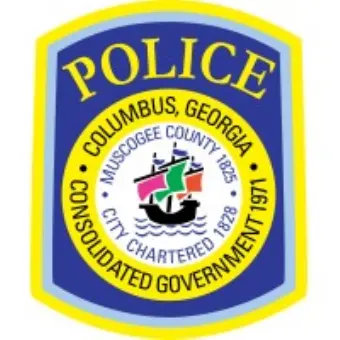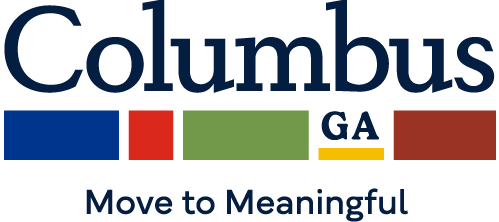Correction Detail Officer - C01 - Waste Disposal

Columbus Consolidated Government
This job is no longer accepting applications
See open jobs at Columbus Consolidated Government.See open jobs similar to "Correction Detail Officer - C01 - Waste Disposal" Columbus 2025.Major Duties and Responsibilities
-
This position is responsible for supervising inmates for labor purposes.
- Provides security for inmates and the general public.
- Transports inmatesbetween Muscogee County Prison and all landfills for details.
- Conducts regular inmate census throughout the work day.
- Performs personal searches of inmates and inmate shacks for contraband.
- Supervises the grass cutting of landfill slopes, sediment ponds, and wells at all landfills owned and operated by Columbus Consolidated Government.
- Supervises the establishment of vegetation on landfill slopes and disturbed areas.
- Supervises the installation of erosion and sediment control measures.
- Supervises the policing of litter.
- Supervises the installation and maintenance of litter fence.
- Supervises the pulling of tarps for daily covers.
- Coordinates with Muscogee County Prison as necessary on inmate and Correctional Officer issues.
- Maintains an up to date inventory, safety check, and servicing of vehicles, tools, equipment and chemicals.
- Performs daily contraband searches of vehicles and keeps an up to date Event Log Book with incidents and accidents.
- Obtains and maintains a current active status on certifications.
- Performs other related duties as assigned.
Knowledge, Skills and Abilities
-
- Knowledge of relevant Department of Corrections guidelines, federal and state laws pertaining to the incarceration of persons.
- Knowledge of what constitutes contraband.
- Knowledge of department safety policies, skill in working with state and county inmates.
- Knowledge of Muscogee County Prison Standard Operating Procedures.
- Knowledge of Georgia Department of Corrections Standard Operating Procedures.
- Knowledge of department safety policies and understanding of the Georgia Department of Corrections Standard Operating Procedures.
- Knowledge of Georgia Department of Corrections and Muscogee County Prison Standard Operating Procedures.
- Knowledge and ability to conduct and maintain an inventory on a large number of equipment and vehicles.
- Knowledge of Georgia Department of Corrections certification requirements.
- Knowledge of Georgia Peace Officer Standards and Training Council (P.O.S.T.) requirements.
- Knowledge of the safe operation of tools and equipment relating to the job.
- Skill in management and supervision.
- Skill in organizing, planning, directing and assigning activities of assigned employees, which include correctional officers, truck drivers, and herbicide technicians.
- Skill in Microsoft Excel and word.
- Skill in problem-solving decision making.?Skill in operating standard office equipment.
- Skill in oral and written communication.
- Skill in security and transporting of sick, injured or disciplinary inmates back to the prison.
- Ability to operate a motor vehicle.
Minimum Educational and Training Requirements
-
Knowledge and level of competency commonly associated with the completion of specialized training in the occupational field, in addition to basic skills typically associated with a high school education. Sufficient experience to understand the basic principles relevant to the major duties of the position, usually associated with the completion of an apprenticeship/internship or having had a similar position for one to two years. Possession of or ability to readily obtain certification by the Georgia Department of Corrections. Possession of or ability to readily obtain certification by the Georgia Department of Corrections. Possession of or ability to readily obtain a valid driver's license issued by the State of Georgia for the type of vehicle or equipment operated.
Physical Requirements
-
The work is performed while intermittently sitting, standing, walking, stooping, walking, bending ad crouching. The employee frequently lifts heavy objects, climbs ladders, uses power/hand tools, uses equipment requiring a high degree of dexterity. Distinguishes shades of color. Additionally, the following physical abilities are required:
- Balancing – maintain equilibrium to prevent falling while walking, standing, or crouching.
- Climbing – ascending, descending ladders, stairs, ramps, requires body agility.
- Crawling – moving about on hands, knees, or hands, feet.
- Crouching – bending body forward by bending leg, spine.
- Feeling – perceiving attributes of objects by touch with skin, fingertips.
- Grasping – applying pressure to object with fingers, palm.
- Handling – picking, holding, or working with whole hand.
- Hearing 1 – perceiving sounds at normal speaking levels, receive information.
- Hearing 2 – receive detailed information, make discrimination in sound.
- Kneeling – bending legs at knee to come to rest at knees.
- Lifting – raising objects from lower to higher position, moving objects side to side, using upper extremities, back.
- Manual Dexterity – picking, pinching, typing, working with fingers rather than hand.
- Mental Acuity – ability to make rational decisions through sound logic, deductive reasoning.
- Pulling - use upper extremities to exert force, haul or tug.
- Pushing – use upper extremities to press against objects with force, or thrust forward, downward, outward.
- Reaching – extending hands or arms in any direction.
- Repetitive Motion – substantial movements of wrists, hands, fingers.
- Speaking – expressing ideas with spoken word, convey detailed, important instructions accurately, concisely.
- Standing – for sustained periods of time.
- Stooping – bending body downward, forward at waist, with full motion of lower extremities and back.
- Talking 1- expressing ideas by spoken word.
- Talking 2 – shouting to be heard above ambient noise.
- Visual Acuity 1 - prepare, analyze data, transcribing, computer terminal, extensive reading.
- Visual Acuity 2 - color, depth perception, field of vision.
- Visual Acuity 3 - determine accuracy, neatness, observe facilities/structures.
- Visual Acuity 4 - operate motor vehicles/heavy equipment.
- Visual Acuity 5 -close acuity for inspection of small defects, machines, use measurement devices, or fabricate parts.
- Walking - on foot to accomplish tasks, long distances, or site to site.
The work is typically performed outdoors, where the employee may be exposed to noise, dust, dirt, grease, machinery with moving parts, contagious or infectious diseases, irritating chemicals, and cold or inclement weather.


